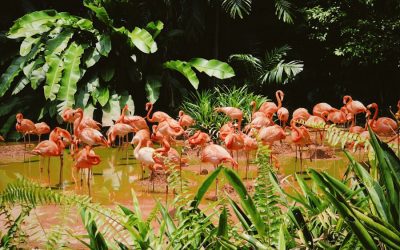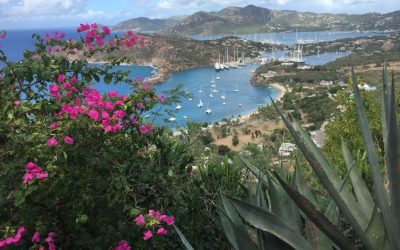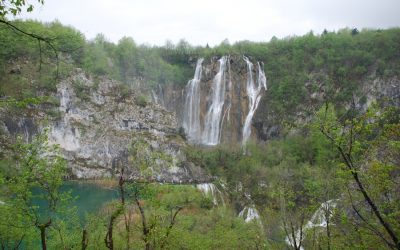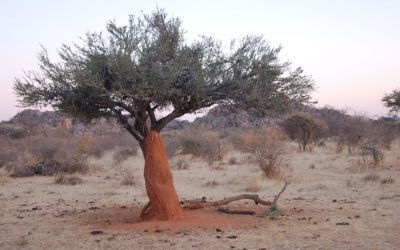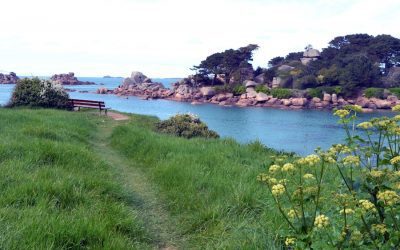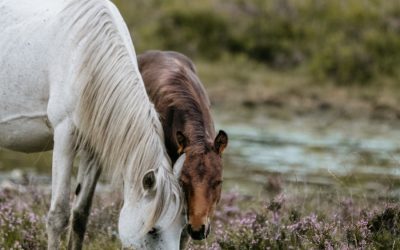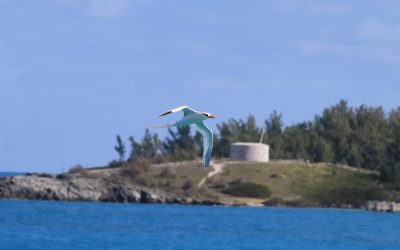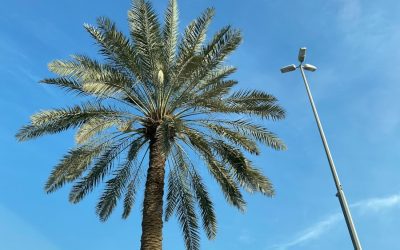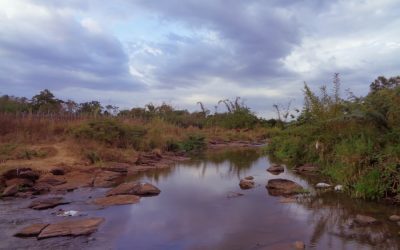World Geography
Geography is the study of the Earth’s landscapes, environments, and the relationships between people and their surroundings. It encompasses both the physical aspects of the Earth, such as its landforms, bodies of water, and climate, as well as the human aspects, including population distribution, cultures, and economies. World geography is a broad field that seeks to understand the complexities of our planet and how humans interact with it. By studying world geography, we can gain a deeper appreciation for the diversity of our planet and the interconnectedness of its various regions.
Geography is a multidisciplinary field that draws on elements of physical science, social science, and humanities. It involves the use of maps, spatial analysis, and geographic information systems (GIS) to understand the Earth’s surface and the processes that shape it. World geography also encompasses the study of human geography, which examines the ways in which people and their activities are distributed across the Earth. By understanding world geography, we can better appreciate the environmental, cultural, and economic challenges facing different regions of the world. This knowledge is crucial for addressing global issues such as climate change, resource management, and international development.
The Five Oceans and Seven Continents
The Earth’s surface is divided into five major oceans: the Pacific, Atlantic, Indian, Southern (or Antarctic), and Arctic Oceans. These vast bodies of water play a crucial role in regulating the Earth’s climate and supporting diverse marine ecosystems. The oceans also serve as important transportation routes and a source of food and other natural resources for human societies around the world.
In addition to the oceans, the Earth’s landmasses are divided into seven continents: Africa, Antarctica, Asia, Europe, North America, Australia (or Oceania), and South America. Each continent has its own unique physical and cultural characteristics, shaped by millions of years of geological processes and human history. From the deserts of Africa to the rainforests of South America, the continents offer a rich tapestry of landscapes and environments for exploration and study.
Major Mountain Ranges and Deserts
The Earth’s surface is also marked by major mountain ranges and deserts that have shaped the planet’s physical and cultural landscapes. The Himalayas, for example, are the highest mountain range in the world and are home to diverse ecosystems and cultures in countries such as India, Nepal, and Bhutan. The Andes in South America, the Rockies in North America, and the Alps in Europe are other prominent mountain ranges that have influenced human settlement patterns and economic activities.
Deserts cover about one-third of the Earth’s land surface and are characterized by low precipitation and extreme temperatures. The Sahara Desert in Africa is the largest hot desert in the world, while the Gobi Desert in Asia is one of the largest cold deserts. Deserts are not only home to unique flora and fauna but have also been important trade routes and cultural crossroads throughout history.
Climate Zones and Biomes
The Earth’s climate is influenced by a variety of factors, including latitude, altitude, ocean currents, and prevailing winds. As a result, the planet is divided into different climate zones, each with its own characteristic weather patterns and ecosystems. The equator, for example, experiences a tropical climate with high temperatures and heavy rainfall, while the polar regions have a cold and dry climate.
These climate zones give rise to different biomes, or large ecological areas characterized by distinct plant and animal communities. The tropical rainforest biome, found near the equator, is home to a diverse array of species and is vital for regulating the Earth’s climate. The grasslands biome, found in regions such as the African savannah and North American prairies, supports grazing animals and has been important for human agriculture throughout history.
Human Geography and Population Distribution
Human geography examines the ways in which people and their activities are distributed across the Earth’s surface. It encompasses topics such as population growth, migration patterns, urbanization, and cultural diversity. Understanding human geography is crucial for addressing global challenges such as poverty, inequality, and environmental degradation.
Population distribution is uneven across the world, with some regions experiencing rapid population growth while others are declining. The majority of the world’s population lives in Asia, particularly in countries such as China and India. Urban areas are also growing rapidly, with more than half of the world’s population now living in cities. This trend has significant implications for infrastructure development, resource management, and social inequality.
Historical and Cultural Geography
Historical geography examines how human activities have shaped the Earth’s landscapes over time. It explores topics such as colonialism, trade routes, and the rise and fall of empires. Cultural geography focuses on how human cultures have developed in different regions of the world and how they interact with their environments.
The Silk Road, for example, was an ancient trade route that connected China with Europe and facilitated the exchange of goods, ideas, and technologies across Eurasia. This historical trade route had a profound impact on the development of cultures and economies along its path. Similarly, cultural geographers study how different societies have adapted to their environments through practices such as agriculture, architecture, and religious beliefs.
The Importance of Geographic Knowledge
Geographic knowledge is crucial for addressing global challenges such as climate change, resource management, and international development. By understanding world geography, we can better appreciate the environmental, cultural, and economic challenges facing different regions of the world. This knowledge is crucial for addressing global issues such as climate change, resource management, and international development.
Geographic knowledge also helps us to understand our interconnectedness with other regions of the world. By studying world geography, we can gain a deeper appreciation for the diversity of our planet and the interconnectedness of its various regions. This understanding can foster a sense of global citizenship and empathy for people from different cultures and backgrounds.
In conclusion, world geography is a complex and multifaceted field that encompasses both physical and human aspects of the Earth’s landscapes. By studying world geography, we can gain a deeper appreciation for the diversity of our planet and the interconnectedness of its various regions. This knowledge is crucial for addressing global challenges such as climate change, resource management, and international development. It also helps us to understand our interconnectedness with other regions of the world and fosters a sense of global citizenship.
FAQs
What is world geography?
World geography is the study of the Earth’s landscapes, environments, and the relationships between people and their environments. It encompasses the physical features of the Earth, as well as the human activity that takes place on it.
Why is world geography important?
World geography is important because it helps us understand the world around us. It provides insights into the physical and human processes that shape our planet, and helps us make informed decisions about how to interact with our environment.
What are the main branches of world geography?
The main branches of world geography include physical geography, which focuses on the Earth’s natural features and processes, and human geography, which examines the relationships between people and their environments.
How does world geography impact our daily lives?
World geography impacts our daily lives in numerous ways, from influencing the weather and climate we experience, to shaping the availability of natural resources and influencing the distribution of populations and cultures around the world.
What are some key concepts in world geography?
Key concepts in world geography include location, place, human-environment interaction, movement, and region. These concepts help geographers understand and interpret the world around them.
Exploring the Rich Flora and Fauna of Seychelles
Seychelles, an archipelago of 115 islands scattered across the Indian Ocean, is renowned for its breathtaking landscapes, pristine beaches, and rich biodiversity. Located approximately 1,600 kilometres off the eastern coast of Africa, this tropical paradise is often described as a jewel of the ocean. The islands are divided into two distinct groups: the granitic islands, which include the main islands of Mahé, Praslin, and La Digue, and the outer coral islands, which are less inhabited and offer a more untouched natural environment. The capital city, Victoria, situated on Mahé, is one of the smallest capitals in the world, yet it serves as a vibrant hub of culture and commerce. The allure of Seychelles extends beyond its stunning vistas; it is a melting pot of cultures influenced by African, French, British, and Indian heritages. This cultural tapestry is reflected in the local cuisine, music, and festivals that celebrate the islands’ diverse history. The archipelago’s unique geographical position has fostered a rich ecosystem that is home to numerous endemic species, making it a focal point for biodiversity enthusiasts and researchers alike. As a destination, Seychelles offers not only relaxation and adventure but also an opportunity to engage with nature in its most pristine form. Summary Seychelles is an archipelago of 115 islands in the Indian Ocean, known for its stunning beaches, crystal-clear waters, and diverse wildlife. The flora of Seychelles is incredibly diverse, with a high level of endemism, including the famous coco de mer palm and numerous orchid species. Seychelles is home to a unique array of fauna, including the Aldabra giant tortoise, Seychelles black parrot, and numerous species of...
Exploring Nigeria’s Rich Flora and Fauna
Nigeria, often referred to as the “Giant of Africa,” is not only notable for its vast population and rich cultural heritage but also for its remarkable biodiversity. The country is home to a plethora of ecosystems, ranging from tropical rainforests to savannahs, wetlands, and mangroves. This diversity of habitats supports an extensive array of flora and fauna, making Nigeria one of the most biologically diverse countries on the continent. The intricate web of life found within Nigeria’s borders is not merely a testament to its natural wealth but also a crucial component of the global ecosystem. The significance of Nigeria’s biodiversity extends beyond its borders; it plays a vital role in global ecological health. The various species and ecosystems contribute to essential services such as carbon sequestration, water purification, and soil fertility. However, this rich tapestry of life faces numerous threats, including habitat destruction, climate change, and poaching. Understanding and appreciating Nigeria’s biodiversity is imperative for fostering conservation efforts and ensuring the sustainability of its natural resources for future generations. Summary Nigeria is home to a rich and diverse range of ecosystems and wildlife, making it a biodiversity hotspot in Africa. From lush rainforests to savannas and wetlands, Nigeria’s diverse ecosystems support a wide variety of plant and animal species. Conservation efforts are crucial to protect Nigeria’s endangered species, including the Nigerian giraffe and the Cross River gorilla. Nigeria boasts a unique flora, with over 4,700 species of plants, including the iconic Nigerian satinwood and the African mahogany. The fascinating fauna of Nigeria includes iconic species such as the African elephant, the West African lion, and the critically endangered...
Discovering Jamaica’s Rich Flora and Fauna
Jamaica, an island nation nestled in the Caribbean Sea, is renowned not only for its vibrant culture and rich history but also for its remarkable biodiversity. This small island, measuring approximately 10,991 square kilometres, is home to a plethora of plant and animal species, many of which are unique to the region. The geographical isolation of Jamaica has fostered a distinctive evolutionary path, resulting in a high level of endemism. The island’s varied topography, ranging from coastal plains to mountainous regions, creates a multitude of habitats that support diverse ecosystems. This intricate web of life is not merely a backdrop to the island’s beauty; it plays a crucial role in maintaining ecological balance and supporting the livelihoods of local communities. The significance of Jamaica’s biodiversity extends beyond its natural beauty. It is integral to the island’s economy, particularly through agriculture, tourism, and fisheries. The rich array of flora and fauna contributes to ecosystem services such as pollination, water purification, and soil fertility. However, this wealth of biodiversity is under threat from various human activities and environmental changes. Understanding the complexities of Jamaica’s ecosystems and the species that inhabit them is essential for fostering a sustainable future for both the environment and the people who depend on it. Summary Jamaica is home to a rich and diverse range of flora and fauna, making it a hotspot for biodiversity. The diverse ecosystems of Jamaica include coral reefs, mangroves, rainforests, and dry limestone forests, each supporting a unique array of species. Jamaica is home to many endemic species, including the Jamaican boa, the Jamaican swallowtail butterfly, and the Jamaican iguana. Threats to...
Exploring the Wildlife in the Dominican Republic
The Dominican Republic, a vibrant Caribbean nation sharing the island of Hispaniola with Haiti, is renowned for its stunning landscapes, rich culture, and diverse wildlife. The country boasts a remarkable array of flora and fauna, making it a significant hotspot for biodiversity in the Caribbean region. With its varied climates and topographies, ranging from lush rainforests to arid deserts, the Dominican Republic provides a unique habitat for numerous species. This biodiversity is not only crucial for ecological balance but also plays a vital role in the cultural and economic fabric of the nation. Wildlife in the Dominican Republic is characterised by its unique blend of endemic species and migratory visitors. The country is home to a plethora of birds, reptiles, mammals, and marine life, many of which are found nowhere else on Earth. The interplay between the natural environment and human activity has shaped the wildlife landscape, leading to both opportunities for conservation and challenges that threaten these precious ecosystems. Understanding the wildlife of the Dominican Republic is essential for appreciating its natural heritage and fostering a sense of responsibility towards its preservation. Summary The Dominican Republic is home to a diverse range of wildlife, including many endemic species. The country’s ecosystems range from coastal mangroves to mountainous forests, providing habitats for a wide variety of wildlife. Endemic species in the Dominican Republic include the Hispaniolan parrot and the Bayahibe rose, found only in the country’s national parks. Popular wildlife viewing locations in the Dominican Republic include Los Haitises National Park and Jaragua National Park. Conservation efforts and ecotourism in the Dominican Republic are helping to protect the country’s...
Exploring the Flora and Fauna of Saint Barthélemy
Saint Barthélemy, often referred to as St. Barts, is a small yet captivating island located in the Caribbean Sea. Renowned for its stunning beaches and luxurious lifestyle, it is also a treasure trove of biodiversity that often goes unnoticed by the casual visitor. The island’s unique geographical position, combined with its varied ecosystems, has fostered a rich tapestry of flora and fauna that is both diverse and intriguing. The biodiversity of Saint Barthélemy is not merely a backdrop to its picturesque landscapes; it plays a crucial role in the ecological balance and cultural heritage of the island. The island’s biodiversity is shaped by its volcanic origins, which have created a range of habitats from coastal mangroves to rocky cliffs and dry forests. This variety of environments supports a wide array of species, some of which are endemic to the island. The interplay between the island’s natural features and human activity has resulted in a dynamic ecosystem that is both resilient and vulnerable. Understanding the biodiversity of Saint Barthélemy is essential for appreciating its natural beauty and recognising the importance of conservation efforts aimed at preserving this unique environment. Summary Saint Barthélemy is a small island in the Caribbean with a rich and diverse biodiversity, making it a haven for nature enthusiasts. The unique flora of Saint Barthélemy includes a variety of cacti, succulents, and tropical plants, many of which are found only on the island. The diverse fauna of Saint Barthélemy includes a wide range of bird species, reptiles, and marine life, providing ample opportunities for wildlife enthusiasts. Saint Barthélemy is home to several endemic species, including the Saint...
Exploring the Rich Flora and Fauna of Bosnia and Herzegovina
Bosnia and Herzegovina, a country nestled in the heart of the Balkan Peninsula, is a treasure trove of biodiversity. Its varied landscapes, ranging from rugged mountains to lush valleys, provide a unique habitat for a plethora of flora and fauna. The geographical position of Bosnia and Herzegovina, bordered by Croatia, Serbia, and Montenegro, has endowed it with a rich tapestry of ecosystems that are both diverse and vibrant. The country is home to numerous endemic species, making it a significant area for biological research and conservation efforts. The intricate interplay of climate, topography, and human activity has shaped the ecological landscape of Bosnia and Herzegovina. With over 1,000 species of vascular plants and a variety of animal species, the country boasts a remarkable level of biodiversity. This natural wealth is not only crucial for the environment but also plays a vital role in the cultural identity of the local communities. The preservation of this biodiversity is essential for maintaining ecological balance and supporting sustainable development in the region. Summary Bosnia and Herzegovina boasts a rich biodiversity, with diverse ecosystems ranging from mountains to rivers. The country is home to unique wildlife such as brown bears and lynx, making it a paradise for nature enthusiasts. The rich plant life in Bosnia and Herzegovina offers opportunities for exploring the forests and meadows. Conservation efforts are underway to protect endangered species and preserve the natural beauty of the national parks. Ecotourism provides sustainable ways for visitors to experience the flora and fauna of Bosnia and Herzegovina. Diverse Ecosystems: From Mountains to Rivers The ecosystems of Bosnia and Herzegovina are as varied as...
Exploring the Rich Flora and Fauna of Niger
Niger, a landlocked country in West Africa, is often overshadowed by its more prominent neighbours. However, it boasts a remarkable array of biodiversity that is both unique and vital to the ecological balance of the region. The country’s varied landscapes, which include the Sahara Desert, savannahs, and riverine ecosystems, provide habitats for a multitude of species. This rich biodiversity is not only crucial for the environment but also plays a significant role in the livelihoods of local communities who depend on natural resources for their sustenance and economic activities. The intricate web of life in Niger is a testament to the resilience of nature in the face of harsh climatic conditions. The country experiences extreme temperatures and limited rainfall, yet it is home to a variety of flora and fauna that have adapted to these challenges. Understanding Niger’s biodiversity is essential for appreciating its ecological significance and the cultural heritage intertwined with its natural resources. The preservation of this biodiversity is not merely an environmental concern; it is also a matter of social and economic importance for the people who inhabit this diverse landscape. Summary Niger is home to a rich and diverse range of ecosystems, flora, and fauna, making it a unique and important biodiversity hotspot. The diverse ecosystems of Niger include the Sahara Desert, Sahel region, and the Niger River, each supporting a wide variety of plant and animal life. The unique flora of Niger includes acacia trees, baobabs, and desert roses, adapted to survive in the harsh desert environment. Niger is home to a fascinating array of wildlife, including elephants, giraffes, lions, and cheetahs, as well...
Exploring the Flora and Fauna of Jersey
Jersey, the largest of the Channel Islands, is a remarkable microcosm of biodiversity, showcasing a unique blend of flora and fauna that reflects its geographical position and varied habitats. Nestled in the English Channel, just off the coast of Normandy, France, Jersey boasts a temperate maritime climate that fosters a rich tapestry of life. The island’s diverse ecosystems range from coastal cliffs and sandy beaches to lush woodlands and agricultural fields, each supporting a myriad of species. This intricate web of life is not only vital for the ecological balance but also contributes significantly to the island’s cultural heritage and economy. The biodiversity of Jersey is particularly noteworthy due to its isolation and the influence of both British and French ecosystems. The island serves as a crucial stopover point for migratory birds and is home to several endemic species. The interplay between human activity and natural habitats has shaped Jersey’s landscape over centuries, leading to a unique blend of cultivated and wild environments. Understanding this biodiversity is essential for conservation efforts and for appreciating the natural beauty that Jersey has to offer. Summary Jersey is home to a diverse range of flora and fauna, making it a unique destination for nature enthusiasts. The island’s flora includes rare orchids, wildflowers, and unique coastal plants, adding to its rich biodiversity. Jersey’s fauna is equally diverse, with a variety of bird species, marine life, and small mammals inhabiting the island. Conservation efforts in Jersey aim to protect and preserve the island’s natural habitats and wildlife for future generations to enjoy. Exploring Jersey’s coastal ecosystems offers opportunities to discover tidal pools, marine life,...
Exploring the Rich Flora and Fauna of Denmark
Denmark, a Scandinavian nation renowned for its picturesque landscapes and rich cultural heritage, is also home to a remarkable array of biodiversity. This small yet diverse country boasts a variety of ecosystems, ranging from coastal wetlands and sandy beaches to lush forests and rolling agricultural lands. The geographical positioning of Denmark, with its proximity to both the North Sea and the Baltic Sea, contributes significantly to its unique biodiversity. The interplay of marine and terrestrial environments creates habitats that support a wide range of species, making Denmark an intriguing case study in biodiversity conservation. The importance of biodiversity in Denmark extends beyond mere aesthetics; it plays a crucial role in maintaining ecological balance and supporting human livelihoods. Biodiversity contributes to ecosystem services such as pollination, water purification, and climate regulation. Furthermore, the preservation of diverse species is essential for scientific research, education, and cultural identity. As global awareness of environmental issues grows, understanding and protecting Denmark’s biodiversity has become increasingly vital, not only for the nation itself but also for the broader ecological health of the planet. Summary Denmark is home to a rich and diverse biodiversity, with unique flora and fauna species thriving in its various ecosystems. The diverse ecosystems of Denmark include coastal areas, woodlands, wetlands, and grasslands, each supporting a wide range of plant and animal life. Unique flora and fauna species in Denmark include the European otter, red deer, and a variety of bird species such as the white-tailed eagle and the common crane. Conservation efforts in Denmark have led to the establishment of protected areas and national parks, providing safe havens for the country’s...
Exploring the Bahamas’ Flora and Fauna
The Bahamas, an archipelago comprising over 700 islands and cays, is renowned not only for its stunning beaches and crystal-clear waters but also for its rich and diverse flora and fauna. This tropical paradise, located in the Atlantic Ocean, boasts a unique ecosystem shaped by its geographical isolation and varied habitats, ranging from lush mangroves to arid pine forests. The interplay of these environments has given rise to a remarkable array of plant and animal species, many of which are found nowhere else on Earth. The Bahamas serves as a vital sanctuary for biodiversity, making it an essential area for ecological study and conservation. The islands’ flora and fauna are influenced by a combination of factors, including climate, soil types, and the surrounding marine environment. The subtropical climate, characterised by warm temperatures and seasonal rainfall, supports a variety of ecosystems that are home to both terrestrial and marine species. The Bahamas is not only a haven for tourists seeking sun and relaxation but also a critical area for researchers and conservationists dedicated to understanding and preserving its natural heritage. The intricate relationships between the islands’ plants and animals highlight the importance of maintaining ecological balance in this fragile environment. Summary The Bahamas is home to a diverse range of plant and animal species, making it a hotspot for nature enthusiasts. The plant life in the Bahamas is incredibly varied, with over 1,000 species of native and introduced plants. The wildlife in the Bahamas is equally fascinating, with a wide array of bird, reptile, and marine life to discover. The Bahamas is home to many endemic species, including the Bahama...
Discovering the Flora and Fauna of Bahrain
Bahrain, a small archipelago in the Arabian Gulf, is often overlooked when it comes to biodiversity. However, this nation boasts a rich tapestry of flora and fauna that reflects its unique geographical position and climatic conditions. The island’s environment is characterised by arid landscapes, coastal areas, and a variety of habitats that support a surprising array of wildlife. From the date palms that dominate the landscape to the diverse marine life found in its surrounding waters, Bahrain’s natural heritage is both fascinating and vital to its ecological balance. The flora of Bahrain is primarily adapted to the harsh desert climate, with many species exhibiting drought-resistant characteristics. The island is home to several endemic plant species, which have evolved to thrive in the saline soils and limited freshwater resources. Meanwhile, the fauna includes a mix of resident and migratory species, with birds being particularly prominent due to Bahrain’s strategic location along migratory routes. This unique blend of terrestrial and marine ecosystems makes Bahrain a significant area for biodiversity, deserving of exploration and appreciation. Summary Bahrain is home to a diverse range of flora and fauna, making it an ideal destination for nature enthusiasts. The unique ecosystems of Bahrain include desert, coastal, and marine environments, each supporting a variety of plant and animal species. Several species in Bahrain, such as the Arabian oryx and the hawksbill turtle, are classified as endangered and require conservation efforts to protect their populations. Bird watching in Bahrain offers opportunities to spot migratory and resident bird species in various habitats, including wetlands and coastal areas. Exploring the marine life of Bahrain through activities like snorkelling and...
Exploring the Wildlife of Eswatini
Eswatini, formerly known as Swaziland, is a small landlocked nation in Southern Africa, renowned for its rich biodiversity and vibrant ecosystems. Nestled between South Africa and Mozambique, this kingdom boasts a variety of habitats, ranging from savannahs and grasslands to dense forests and wetlands. The country’s wildlife is a reflection of its diverse landscapes, providing a sanctuary for numerous species, some of which are endemic to the region. The intricate relationship between the people of Eswatini and their natural environment has fostered a deep respect for wildlife, making conservation an integral part of the national identity. The wildlife of Eswatini is not only a source of national pride but also a vital component of the local economy, particularly through tourism. Visitors flock to the country to experience its natural beauty and observe its unique fauna in their natural habitats. The government and various organisations have recognised the importance of preserving these natural resources, leading to the establishment of national parks and reserves that protect both wildlife and their habitats. This commitment to conservation is crucial, as many species face threats from habitat loss, poaching, and climate change. Understanding the complexities of Eswatini’s wildlife is essential for appreciating the efforts being made to safeguard it for future generations. Summary Eswatini is home to a diverse range of wildlife, including many iconic species such as elephants, rhinos, and lions. The country boasts several national parks and reserves, such as Hlane Royal National Park and Mlilwane Wildlife Sanctuary, which offer unique opportunities for wildlife viewing and conservation. Iconic wildlife species in Eswatini include the black rhino, African elephant, and the elusive leopard,...



